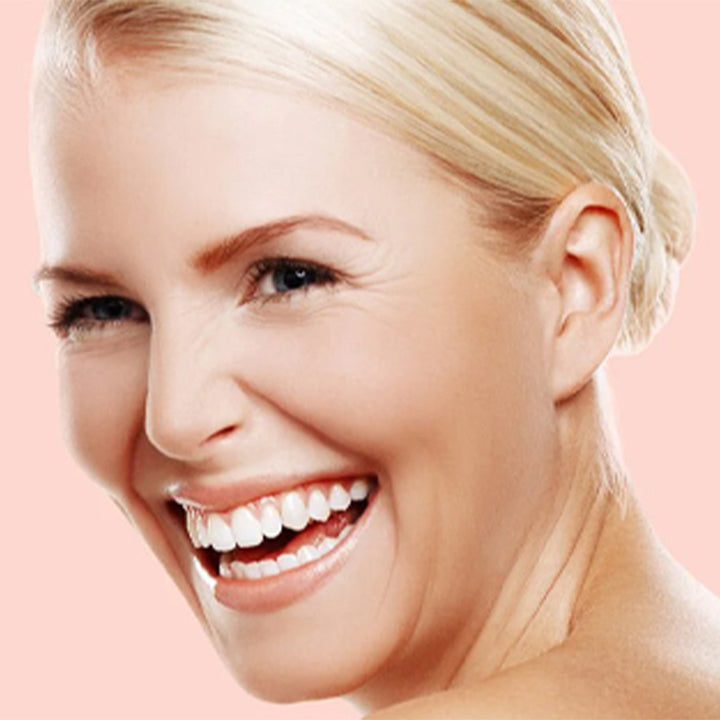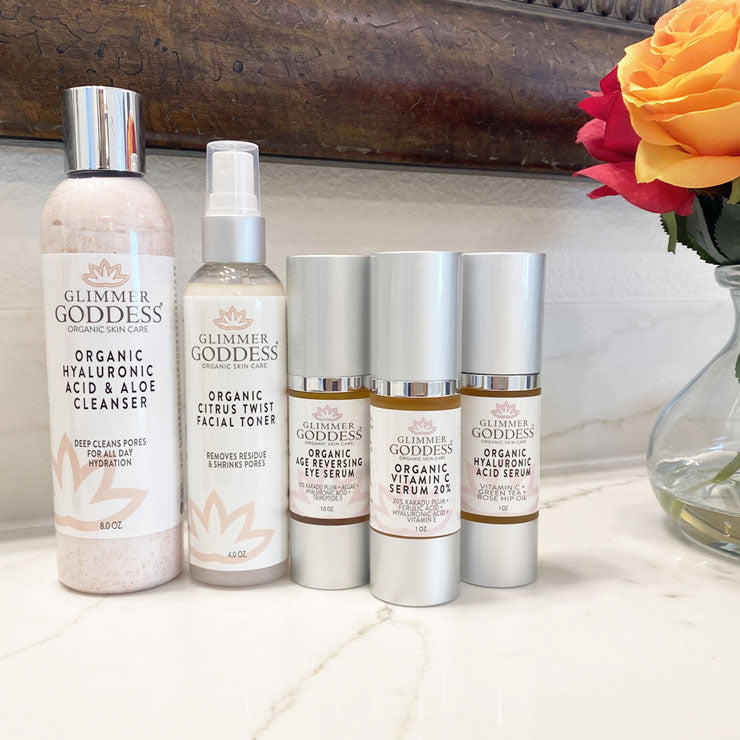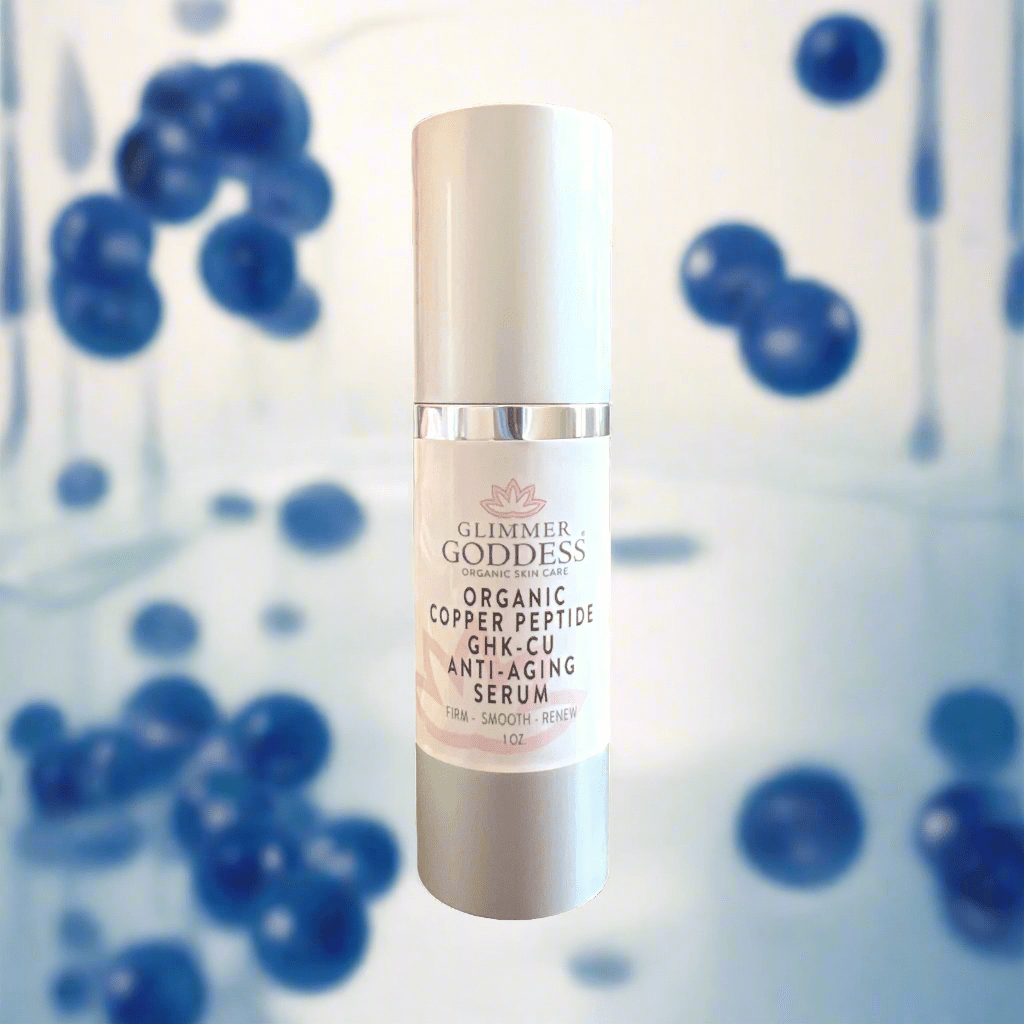
Skincare 101: Beginner’s Guide to Understanding Ingredients
Navigating the world of skincare can be overwhelming due to the myriad of ingredients and products available. Understanding these ingredients, how they work, and how they can benefit your skin is crucial for developing an effective skincare routine. This comprehensive guide will delve into the various types of ingredients, their functions, and why they matter in achieving healthy, radiant skin.
Explore the Secrets of Healthy Skin: A Comprehensive Guide
How Do Ingredients Affect Our Skin?
The health and appearance of our skin are greatly influenced by the ingredients in the products we use. Understanding how different ingredients interact with our skin can help us make more informed choices and achieve our desired skin goals.
Ingredients play a crucial role in the overall health and appearance of our skin. Each ingredient has its own unique properties and effects, which can either benefit or harm our skin depending on its compatibility with our individual skin type and needs.
- Moisturizing ingredients, such as glycerin and hyaluronic acid, help to hydrate and plump the skin, reducing the appearance of fine lines and wrinkles.
- Antioxidants, like vitamin C and green tea extract, protect the skin from environmental stressors and free radicals, which can cause premature aging and damage.
- Exfoliating ingredients, such as alpha-hydroxy acids (AHAs) and beta-hydroxy acids (BHAs), help to remove dead skin cells and unclog pores, revealing a brighter, more radiant complexion.
- Soothing ingredients, like aloe vera and chamomile, can calm inflammation and redness, making them particularly beneficial for sensitive skin types.
- Certain ingredients, like fragrances and harsh preservatives, can actually irritate the skin and cause adverse reactions, so it's important to read product labels carefully and choose formulas that are gentle and suitable for your specific skin needs.
What Are Active Ingredients vs. Inactive Ingredients?
Understanding the difference between active and inactive ingredients in skincare products can help you make more informed decisions about the products you use and ensure that you are getting the most effective and safe formulation for your skin.
Active ingredients are the key components in a skincare product that are responsible for providing the desired benefits, such as improving the appearance of fine lines and wrinkles, reducing acne, or brightening the complexion. These are the ingredients that are scientifically proven to have a measurable effect on the skin.
- Common active ingredients include retinoids, vitamin C, alpha-hydroxy acids, and niacinamide, among others.
- Active ingredients are typically present in smaller concentrations, as they are potent and can potentially cause irritation if used in high amounts.
- It's important to use active ingredients as directed, as they can be more powerful and may require a gradual introduction to avoid sensitizing the skin.
Inactive ingredients, also known as excipients, are the components in a skincare product that do not have a direct effect on the skin's appearance or function. These ingredients are responsible for the overall texture, consistency, and stability of the product.
- Inactive ingredients can include things like emulsifiers, preservatives, and thickeners, which help to keep the product stable and ensure that it's easy to apply and absorb into the skin.
- While inactive ingredients may not have a direct impact on the skin's appearance, they can still affect the overall experience of using the product, such as its feel, scent, and ease of application.
By understanding the difference between active and inactive ingredients, you can better evaluate the effectiveness of a skincare product and ensure that you are getting the most out of your investment. This knowledge can also help you to identify potential irritants or sensitivities and make more informed decisions about the products you choose to use on your skin.
Why Is It Important to Know Your Skin Type?
Knowing your skin type is crucial when it comes to choosing the right skincare products and developing an effective routine. By understanding your unique skin needs, you can tailor your approach and achieve the best results for healthier, more radiant skin.
Identifying your skin type is the first step in creating a customized skincare regimen. Different skin types have different needs and require different types of products and ingredients to address their specific concerns.
- Dry skin types typically require more hydrating and nourishing ingredients, such as oils and emollients, to combat flakiness and maintain a healthy moisture balance.
- Oily skin types often benefit from products that contain mattifying and oil-controlling ingredients, like clay and salicylic acid, to help manage excess shine and prevent breakouts.
- Sensitive skin types may be more reactive to certain ingredients and require gentle, fragrance-free formulas to avoid irritation.
- Combination skin, which is a mix of dry and oily areas, may need a more tailored approach, using different products for different zones of the face.
Knowing your skin type can also help you avoid using products that may exacerbate your existing concerns or cause new problems to arise. For example, using a heavy, occlusive moisturizer on oily skin can lead to clogged pores and breakouts, while using a harsh, drying cleanser on dry skin can strip the natural oils and compromise the skin's barrier.
- Paying attention to how your skin reacts to different products and ingredients can also help you refine your skincare routine over time, ensuring that you are consistently addressing your specific needs.
- Consulting with a dermatologist or skincare professional can also be helpful in determining your skin type and identifying the best products and ingredients for your individual concerns.
By understanding your skin type and tailoring your skincare routine accordingly, you can unlock the key to healthier, more radiant skin. With the right products and ingredients, you can address your specific concerns and achieve the glowing, confident complexion you desire.
Unlocking the Secrets of Skincare: Hyaluronic Acid, Vitamin C, and Exfoliants
What Are Hyaluronic Acid and Its Benefits?
Hyaluronic acid is a natural substance found in the skin, joints, and other tissues in the body. It is known for its ability to attract and retain moisture, making it a popular ingredient in skincare products.
Hyaluronic acid is a powerhouse ingredient for maintaining healthy, youthful-looking skin. Here's why it's a must-have in your skincare routine:
- Hyaluronic acid is a humectant, meaning it draws moisture from the environment and locks it into the skin, keeping it hydrated and plump.
- It can hold up to 1,000 times its weight in water, making it an excellent choice for those with dry or dehydrated skin.
- Hyaluronic acid helps to reduce the appearance of fine lines and wrinkles by plumping and smoothing the skin's surface.
- It has anti-inflammatory properties, which can help calm redness and irritation, making it a great option for sensitive skin types.
- Hyaluronic acid can also help to improve the skin's barrier function, protecting it from environmental aggressors.
- Hyaluronic acid is available in different molecular weights, with each type serving a specific purpose. Lower molecular weight hyaluronic acid can penetrate deeper into the skin, while higher molecular weight hyaluronic acid sits on the surface, providing a more immediate plumping effect.
Incorporating hyaluronic acid into your skincare routine is a simple yet effective way to achieve a hydrated, radiant, and youthful-looking complexion.
What Role Does Vitamin C Play in Skincare?
Vitamin C is a powerful antioxidant that has a wide range of benefits for the skin. It is known for its ability to brighten, protect, and rejuvenate the skin.
Vitamin C is a skincare superstar that should be a staple in your regimen. Here's why it's so important:
- Vitamin C is a potent antioxidant that helps to neutralize free radicals, which can cause damage and accelerate the aging process.
- It can inhibit the production of melanin, the pigment that causes dark spots and discoloration, resulting in a more even and radiant complexion.
- Vitamin C stimulates the production of collagen, the protein that gives skin its firmness and elasticity, helping to reduce the appearance of fine lines and wrinkles.
- It has anti-inflammatory properties, which can help to soothe and calm the skin, making it a great choice for those with sensitivity or redness.
- Vitamin C can also improve the skin's barrier function, protecting it from environmental stressors and preserving moisture levels.
- When it comes to choosing a vitamin C product, look for one that is stabilized and formulated at the right pH level to ensure maximum efficacy. Serums are a popular way to incorporate vitamin C into your routine, as they allow for targeted application and deeper penetration.
Vitamin C is a true multitasker in the world of skincare, offering a range of benefits that can help you achieve a healthy, radiant, and youthful-looking complexion.
How Do Exfoliants Like AHA and BHA Work?
Exfoliants, such as alpha hydroxy acids (AHAs) and beta hydroxy acids (BHAs), are chemical exfoliants that help to remove dead skin cells and unclog pores, revealing a brighter, smoother, and more even complexion.
AHAs and BHAs are powerful tools in your skincare arsenal, but it's important to understand how they work and how to use them effectively:
- AHAs, such as glycolic acid and lactic acid, work by breaking down the bonds between dead skin cells, allowing them to be sloughed off more easily.
- BHAs, like salicylic acid, are oil-soluble, meaning they can penetrate deeper into the pores to remove excess sebum, dirt, and impurities.
- Both AHAs and BHAs can help to improve the appearance of fine lines, wrinkles, and hyperpigmentation, as well as minimize the appearance of pores.
- Exfoliants can also help to facilitate the absorption of other skincare products, making them more effective.
- When using exfoliants, it's important to start with a lower concentration and gradually increase the frequency of use, as they can be drying or irritating if used too aggressively. It's also important to use sunscreen, as exfoliated skin can be more sensitive to UV exposure.
Incorporating AHAs and BHAs into your skincare routine can be a game-changer, but it's essential to use them with care and caution to avoid over-exfoliating and damaging your skin's barrier. With the right approach, these powerful ingredients can help you achieve a radiant, youthful-looking complexion.
Understanding Ingredient Labels: A Comprehensive Guide
What Should You Look for in the Ingredient List?
The ingredient list on a product's label can seem like a daunting and confusing array of unfamiliar words. However, understanding what to look for can empower you to make more informed and healthier choices. By taking the time to decipher the information provided, you can ensure that the products you choose align with your dietary needs and preferences.
The ingredient list is a wealth of information that can reveal a lot about a product. Here's what you should focus on when examining it:
- Identify the main ingredients: The ingredients are listed in descending order by weight, with the primary ingredients appearing first. This can give you a sense of the product's composition and help you determine if it aligns with your dietary requirements.
- Look for familiar, whole-food ingredients: Opt for products that have a short, recognizable ingredient list, with minimal processed or artificial additives. Whole, natural ingredients are generally healthier choices.
- Be wary of long, unpronounceable names: If the ingredient list is filled with numerous, complex-sounding chemicals, it may be a sign that the product contains highly processed or artificial components that you may want to avoid.
By carefully scrutinizing the ingredient list, you can make more informed decisions about the products you choose to consume, ultimately supporting your overall health and well-being.
How to Identify Harmful Ingredients?
Navigating the ingredient list can be challenging, especially when it comes to identifying potentially harmful components. However, with a little knowledge and vigilance, you can become a more discerning consumer and steer clear of ingredients that may be detrimental to your health.
Here are some common ingredients to watch out for and understand why they may be problematic:
- Artificial colors and flavors: These synthetic additives are often used to enhance the appearance or taste of processed foods, but they have been linked to various health concerns, including hyperactivity in children and potential carcinogenic effects.
- Preservatives: While some preservatives are necessary to extend a product's shelf life, certain preservatives, such as BHA and BHT, have been associated with potential health risks and should be limited in one's diet.
- Added sugars: Excessive consumption of added sugars, often hidden under various names like high-fructose corn syrup, can contribute to weight gain, diabetes, and other health issues.
- Transfats: Also known as partially hydrogenated oils, transfats have been linked to an increased risk of heart disease and should be avoided whenever possible.
By familiarizing yourself with these common problematic ingredients and learning to identify them on product labels, you can make more informed choices that prioritize your health and well-being.
Why Are Ingredients Listed in a Specific Order?
The order in which ingredients are listed on a product's label is not arbitrary; it follows a specific protocol that can provide valuable insights into the composition of the item. Understanding the reasoning behind this order can help you make more informed purchasing decisions.
The ingredients are listed in descending order by weight. This means that the ingredient that makes up the largest portion of the product is listed first, followed by the next most abundant ingredient, and so on. This information can be helpful in several ways:
- Identify the primary components: By understanding the order of ingredients, you can quickly determine the main ingredients that make up the product, allowing you to assess whether it aligns with your dietary needs and preferences.
- Detect hidden or excessive additives: If you notice a long list of unfamiliar, complex-sounding ingredients towards the end of the list, it may indicate that the product contains a high number of processed or artificial additives, which you may want to avoid.
- Understand the product's true composition: The order of ingredients can reveal the true nature of a product, particularly when it comes to marketing claims. For example, if a product is marketed as "fruit-flavored" but the first few ingredients are sugar and artificial flavors, it may not be as healthy as it appears.
By learning to interpret the order of ingredients on product labels, you can become a more discerning and informed consumer, making choices that support your overall health and well-being.
Q&A
What are the main functions of skincare ingredients?
Skincare ingredients can hydrate, exfoliate, soothe, and protect the skin. Hydrating ingredients like glycerin trap moisture, exfoliants like AHAs and BHAs remove dead skin cells, soothing ingredients calm irritation, and antioxidants like vitamin C protect against environmental damage.
How do I know if a product is suitable for my skin type?
Identifying your skin type is essential. Dry skin benefits from rich moisturizers, while oily skin thrives on products that control sebum. Use gentle, fragrance-free products for sensitive skin and tailor your routine for combination skin by addressing different areas accordingly.
Why is hyaluronic acid popular in skincare?
Hyaluronic acid is highly sought after for its ability to retain moisture, holding up to 1,000 times its weight in water. This makes it essential for hydrating and plumping the skin, reducing the visibility of fine lines and enhancing overall skin health.
What's the difference between active and inactive ingredients?
Active ingredients provide specific benefits such as anti-aging or acne treatment, while inactive ingredients serve as vehicle components to enhance product texture, stability, and absorption, without directly impacting skin health.
How often should I use exfoliants like AHA and BHA?
Start with 1-2 times a week for exfoliants to gauge how your skin reacts. Gradually increase frequency if your skin tolerates the ingredients well. Always follow up with sunscreen, as exfoliated skin can be more sensitive to sun exposure.
In conclusion, understanding skincare ingredients is key to achieving healthier skin. By familiarizing yourself with both active and inactive ingredients and recognizing your skin type, you can tailor your skincare routine effectively. With informed choices, including powerful ingredients like hyaluronic acid and vitamin C, you lay the foundation for a vibrant and youthful complexion. Remember, your skin deserves the best, and knowledge is the first step toward nurturing it wisely.







